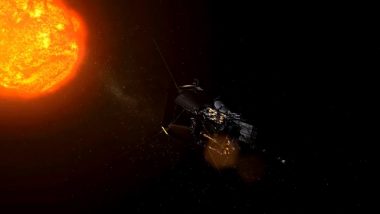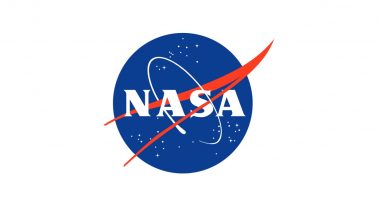Washington, July 2: NASA's self-driving six-wheeled robot on Mars -- the Perseverance rover -- is set to start an epic journey across a crater floor to seek signs of ancient life, the US space agency said on Friday.
The rover, moving at a top speed of 120 metres per hour, will trek across the Martian landscape using a newly enhanced auto-navigation system. Called AutoNav, this enhanced system makes 3D maps of the terrain ahead, identifies hazards, and plans a route around any obstacles without additional direction from controllers back on Earth. NASA’s Ingenuity Helicopter Completes 8th Flight on Mars
"We have a capability called 'thinking while driving'," said Vandi Verma, a senior engineer, rover planner, and driver at NASA's Jet Propulsion Laboratory in Southern California, in a statement on Friday.
"The rover is thinking about autonomous drive while its wheels are turning," Verma added.
Using AutoNav, Perseverance will begin its first science campaign on the floor of Jezero Crater. This crater once was a lake, when, billions of years ago, Mars was wetter than today. Perseverance's destination is a dried-out river delta at the crater's edge.
If life ever took hold on early Mars, signs of it might be found there. The rover will gather samples over some 15 kilometres, then prepare the samples for collection by a future mission that would take them back to Earth for analysis, NASA said.
Besides AutoNav, Perseverance wheels are also modified to help with traction as well as durability. Along with being slightly greater in diameter and narrower than Curiosity's wheels, they each feature 48 treads that look like slightly wavy lines, as opposed to Curiosity's 24 chevron-pattern treads.
Higher clearance for Perseverance's belly also enables the rover to roll safely over rougher ground -- including good-size rocks. And Perseverance's beefed-up auto-navigation capabilities include ENav, or enhanced navigation, an algorithm-and-software combination that allows more precise hazard detection.
Perseverance can also employ one of its computers just for navigation on the surface; its main computer can devote itself to the many other tasks that keep the rover healthy and active.
The rover also keeps track of how far it has moved from one spot to another using a system called "visual odometry." Perseverance periodically captures images as it moves, comparing one position to the next to see if it moved the expected distance.
(The above story first appeared on LatestLY on Jul 02, 2021 04:51 PM IST. For more news and updates on politics, world, sports, entertainment and lifestyle, log on to our website latestly.com).













 Quickly
Quickly




















